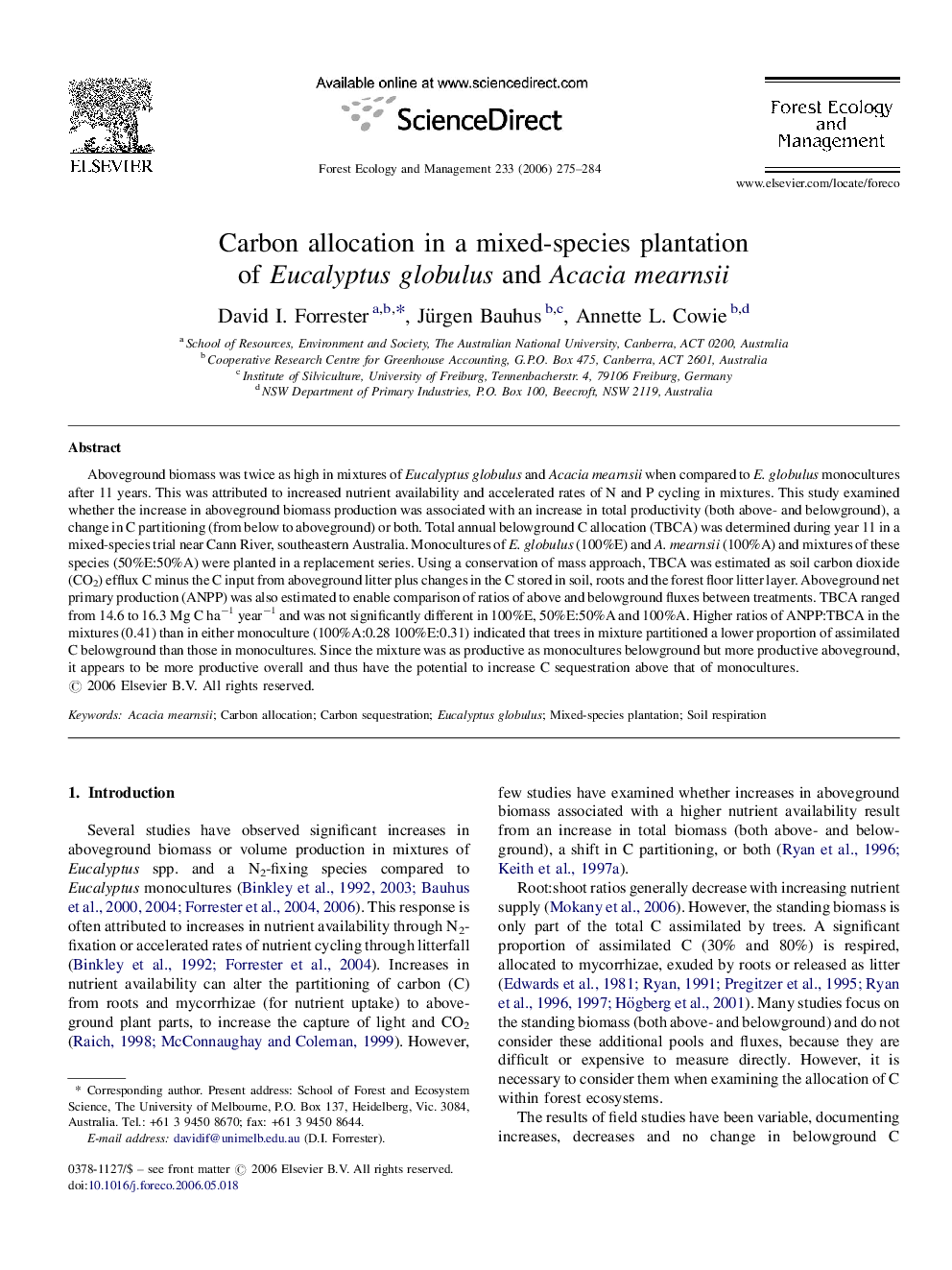| Article ID | Journal | Published Year | Pages | File Type |
|---|---|---|---|---|
| 90079 | Forest Ecology and Management | 2006 | 10 Pages |
Aboveground biomass was twice as high in mixtures of Eucalyptus globulus and Acacia mearnsii when compared to E. globulus monocultures after 11 years. This was attributed to increased nutrient availability and accelerated rates of N and P cycling in mixtures. This study examined whether the increase in aboveground biomass production was associated with an increase in total productivity (both above- and belowground), a change in C partitioning (from below to aboveground) or both. Total annual belowground C allocation (TBCA) was determined during year 11 in a mixed-species trial near Cann River, southeastern Australia. Monocultures of E. globulus (100%E) and A. mearnsii (100%A) and mixtures of these species (50%E:50%A) were planted in a replacement series. Using a conservation of mass approach, TBCA was estimated as soil carbon dioxide (CO2) efflux C minus the C input from aboveground litter plus changes in the C stored in soil, roots and the forest floor litter layer. Aboveground net primary production (ANPP) was also estimated to enable comparison of ratios of above and belowground fluxes between treatments. TBCA ranged from 14.6 to 16.3 Mg C ha−1 year−1 and was not significantly different in 100%E, 50%E:50%A and 100%A. Higher ratios of ANPP:TBCA in the mixtures (0.41) than in either monoculture (100%A:0.28 100%E:0.31) indicated that trees in mixture partitioned a lower proportion of assimilated C belowground than those in monocultures. Since the mixture was as productive as monocultures belowground but more productive aboveground, it appears to be more productive overall and thus have the potential to increase C sequestration above that of monocultures.
